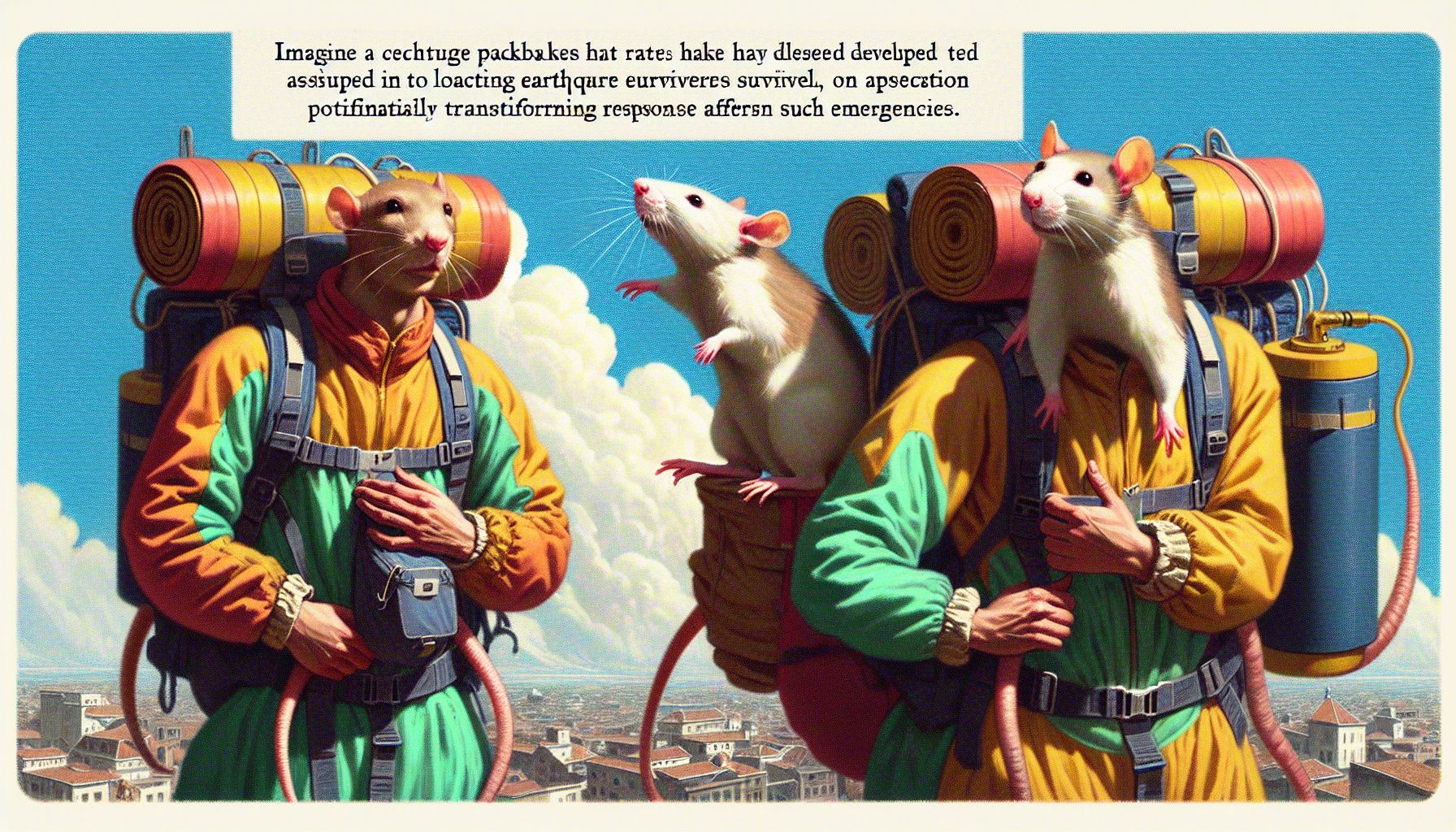Innovative Rat Backpacks: A Breakthrough in Disaster Rescue Operations

Eindhoven, Wednesday, 11 September 2024.
Eindhoven University of Technology student Bram van Kasteren has developed advanced backpacks for rats to aid in locating earthquake survivors. The technology improves communication between rats and rescuers, potentially revolutionizing disaster response efforts.
Background on RescueRats Project
The RescueRats project, a collaboration between Tula Technology, TU/e’s Department of Electrical Engineering, and the non-profit organization APOPO, aims to enhance disaster response through innovative technology. The project leverages the unique abilities of African giant pouched rats, known for their keen sense of smell, to locate victims trapped under debris. These rats, equipped with specially designed backpacks, can navigate through narrow spaces unreachable by human rescuers.
Technological Advancements
The backpacks, initially developed by Sander Verdiesen during his 2019 internship, have seen significant upgrades. The current version, improved by Bram van Kasteren for his master’s thesis, includes an enhanced camera, longer-lasting batteries, and an alarm button that allows the rat to notify rescuers upon finding a victim. One of the major challenges addressed by Van Kasteren was the lack of GPS functionality underground. To overcome this, he developed a circuit board featuring an altimeter, antenna, and GPS module, combined with radio triangulation for effective real-time location tracking in disaster zones.
Field Testing and Implementation
The technology has been tested extensively at Eindhoven University of Technology and in Türkiye, a region frequently affected by earthquakes. Roel Jordans, a lecturer at TU/e, emphasized the importance of reliable communication between the rats and rescue workers, stating, ‘To track down people buried under the rubble, the rat had to be in communication with the rescue workers.’ These tests have demonstrated the potential of the RescueRats project to significantly improve the efficiency and effectiveness of search and rescue operations.
APOPO’s Broader Impact
APOPO, renowned for training rats to detect landmines and tuberculosis, has now expanded its focus to include disaster response. The organization has a proven track record, having detected over 130,000 landmines globally and identified tuberculosis in over 25,000 cases from nearly 850,000 sputum samples. Each rat can check 100 samples in 20 minutes, vastly outperforming traditional methods. This expertise in training rats is now being applied to the RescueRats project, demonstrating the versatility and potential of these animals in various humanitarian missions.
Future Prospects
Looking ahead, the RescueRats project aims to further refine the technology and expand its deployment in disaster-prone regions. The collaboration with TU/e and technological partners ensures continuous innovation and improvement. With the increasing frequency of natural disasters, this project represents a significant advancement in search and rescue operations, potentially saving countless lives by enabling faster and more efficient victim identification.

